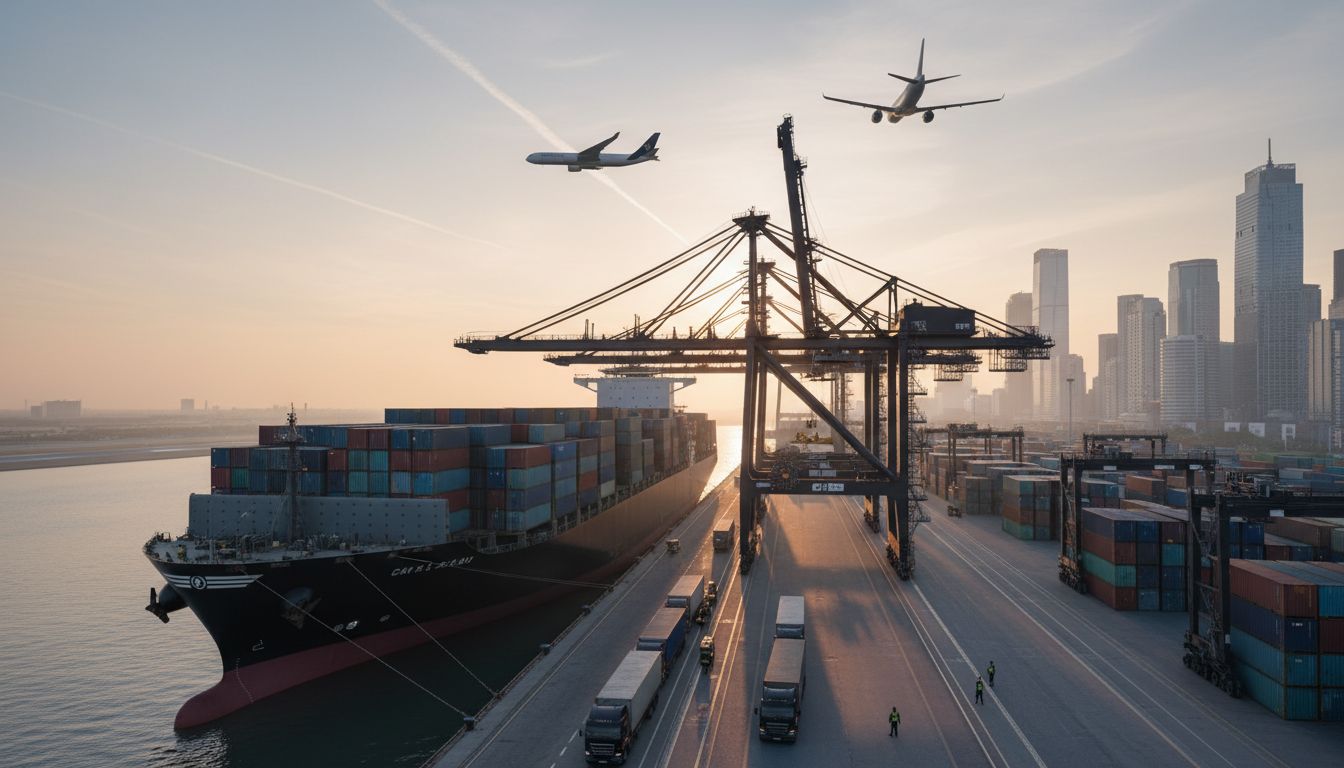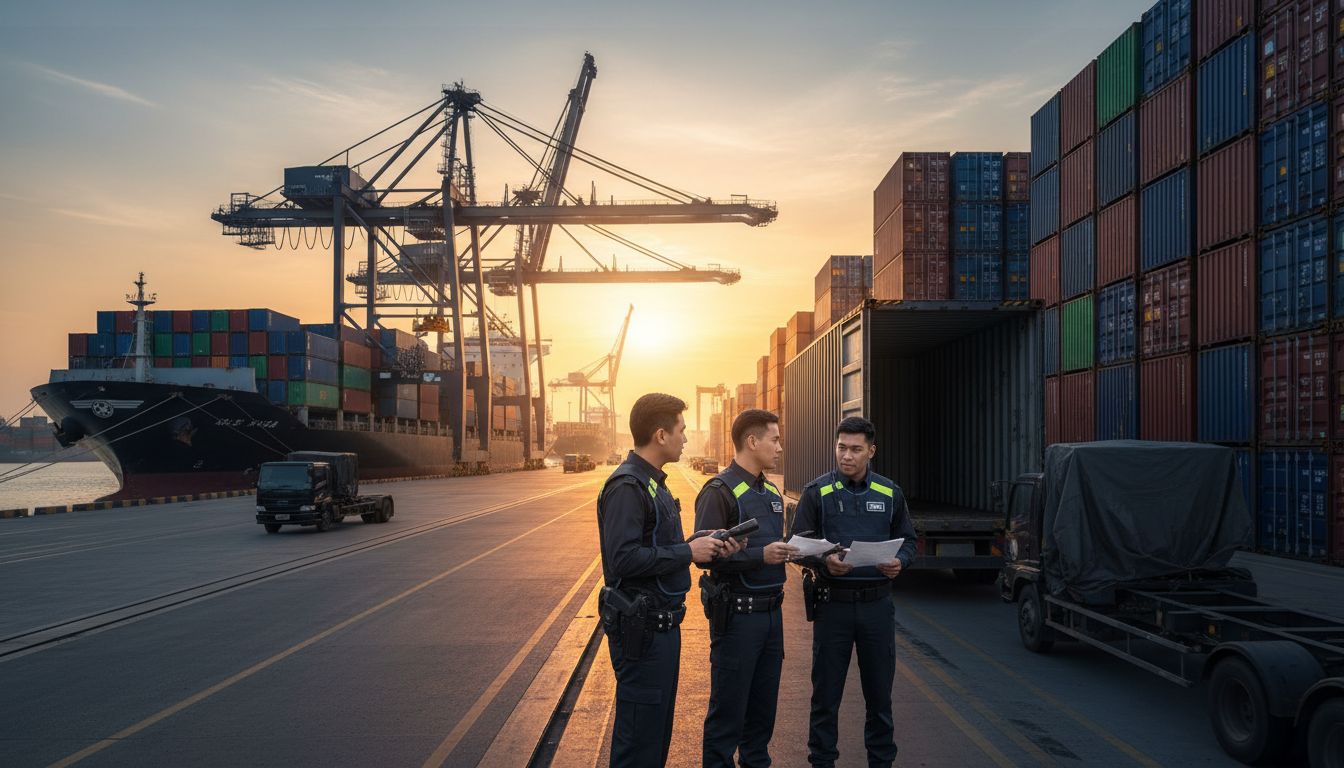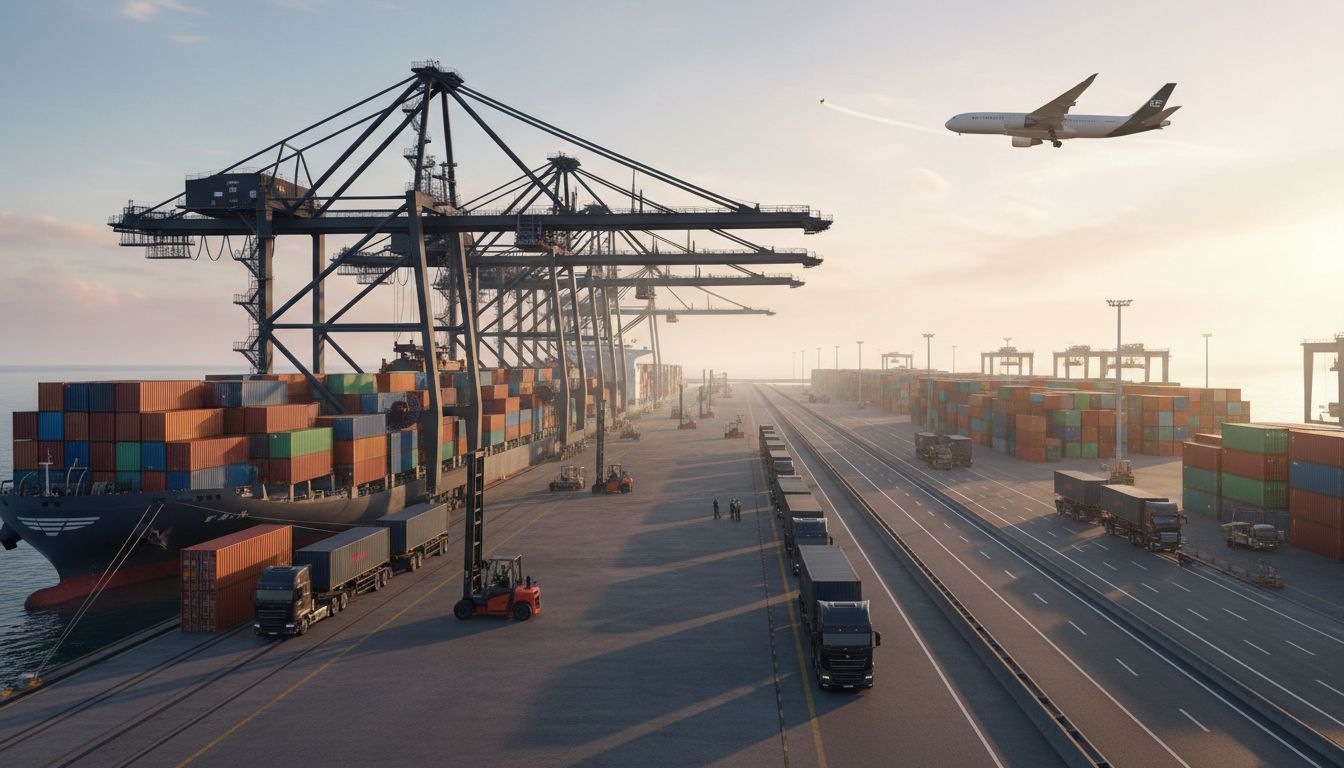A bill of lading controls every part of a shipment, from legal proof of ownership to customs clearance. Most people see it as just another shipping form. Yet, handling it the wrong way could delay cargo, rack up surprise charges, or even block your goods from reaching their destination. In fact, even a single typo or missing detail can hold up your shipment for days or cost you thousands in fees. The document everyone rushes past might be the most powerful tool for smooth global trade.
Table of Contents
- Step 1: Gather Necessary Documentation And Tools
- Step 2: Identify Key Sections On The Bill Of Lading
- Step 3: Review The Shipper And Consignee Information
- Step 4: Analyze The Cargo Description And Details
- Step 5: Verify Terms And Conditions
- Step 6: Confirm Accuracy And Keep A Copy For Records
Quick Summary
| Key Point | Explanation |
|---|---|
| 1. Gather all necessary documentation | Ensure you collect the original bill of lading, supporting documents, and essential tools for review. |
| 2. Examine shipper and consignee details | Verify the complete and accurate contact information to prevent shipping delays or complications. |
| 3. Analyze cargo descriptions thoroughly | Review product details, weights, and special handling requirements to ensure compliance and accuracy. |
| 4. Scrutinize terms and conditions | Understand payment, liability, and special conditions to protect your interests and avoid risks. |
| 5. Conduct a final accuracy check | Cross-verify all details before storing the document securely for future reference. |
Step 1: Gather Necessary Documentation and Tools
Successfully reading a bill of lading begins with meticulous preparation and collecting the right documents and tools. This initial step sets the foundation for accurate interpretation and ensures you have everything necessary to navigate this critical shipping document effectively.
Start by assembling your primary resources. You will need the original bill of lading, a reliable reference guide or manual, a clear workspace, and some essential tools like a magnifying glass or high-quality reading glasses for examining fine print. Professional logistics managers recommend creating a dedicated checklist to track your documentation review process.
The bill of lading itself requires careful handling. Verify you have the original document, not a copy, as many legal and financial transactions depend on the original’s authenticity. Check that the document is complete, with no missing pages or sections. Look for official stamps, signatures, and watermarks that validate its legitimacy. Learn more about export documentation processes to understand the comprehensive requirements for international shipping documents.
Key tools for this step include:
- High-resolution scanner or camera for digital documentation backup
- Notepad or digital note-taking application for recording observations
- Translation resources if the bill of lading is in a foreign language
Before proceeding, confirm you have all supporting documentation that might accompany the bill of lading. This could include commercial invoices, packing lists, certificates of origin, and any specific customs clearance paperwork. Organize these documents chronologically and ensure they are easily accessible during your review.
Use the table below to organize and prepare the essential tools and resources needed before reviewing a bill of lading, aiding efficiency and accuracy during the process.
| Tool/Resource | Purpose/Use | Notes |
|---|---|---|
| Original Bill of Lading | Legal, authentic shipping record | Ensure it is the original with stamps/signatures |
| Reference Guide/Manual | Assists with interpretation | For unfamiliar terms or layouts |
| High-Resolution Scanner/Camera | Digital documentation backup | Use for clear, archival-quality scans |
| Notepad/Digital Note App | Record observations during review | Keep notes organized and accessible |
| Magnifying Glass/Reading Glasses | Examining fine print | Especially useful for signatures or small text |
| Translation Resources | Translate foreign-language documents | Needed if bill is not in English |
| Supporting Shipping Documents | Cross-verification of shipment details | Include invoices, packing lists, certificates |
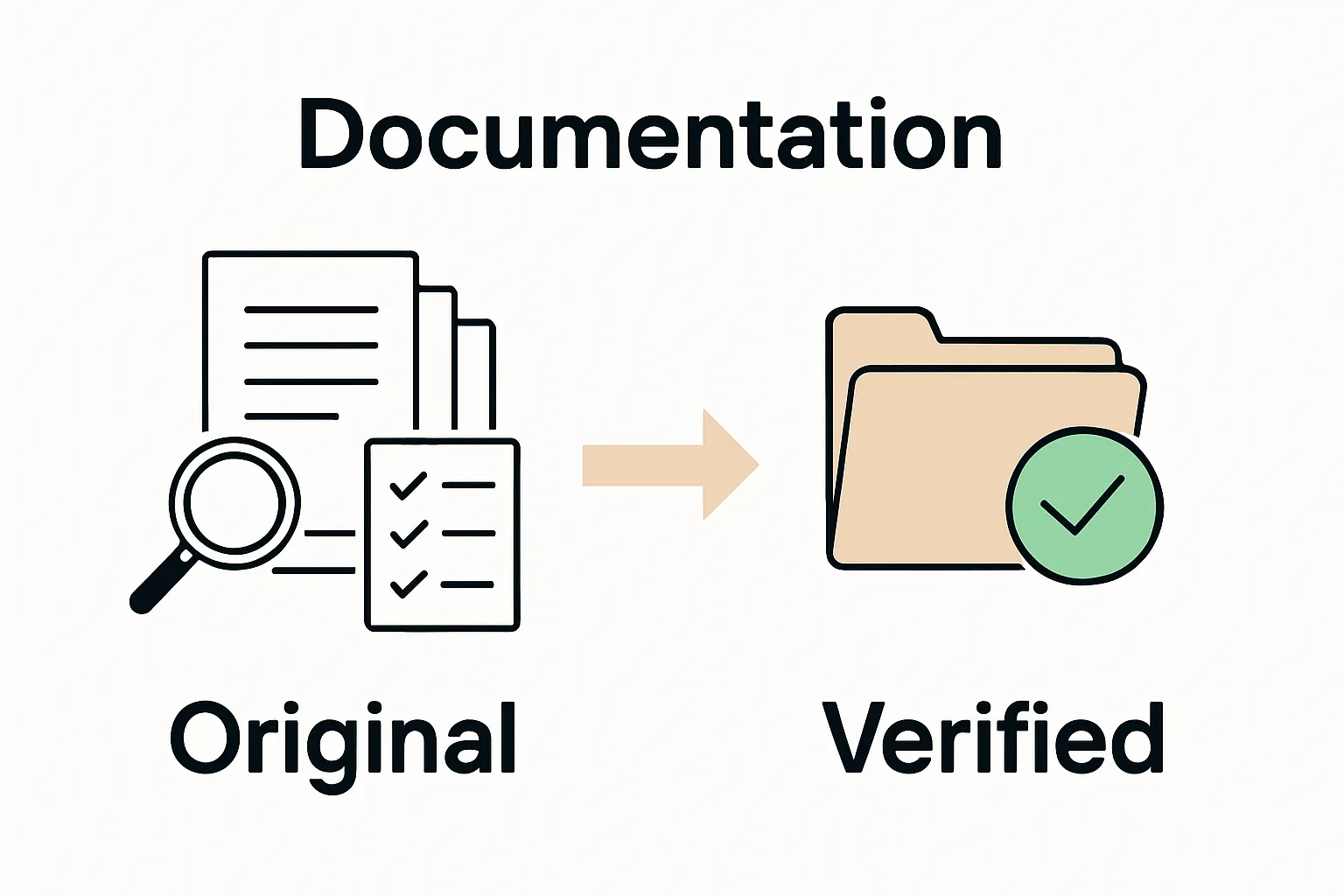
Successful completion of this step means you have a clean, complete original bill of lading, all necessary supporting documents, and the right tools to begin a thorough and accurate examination of the shipping record.
Step 2: Identify Key Sections on the Bill of Lading
Navigating a bill of lading requires a systematic approach to understanding its complex layout and critical information. This step focuses on breaking down the document into its essential components, ensuring you can extract accurate shipping details with confidence.
Begin by orienting yourself with the document’s standard structure. Most bills of lading share a consistent format, with sections dedicated to specific shipping and legal information. Learn more about understanding bill of lading types to gain deeper insights into these critical shipping documents.
The top section typically contains shipper and consignee details. Look for complete company names, addresses, contact information, and tax identification numbers. Verify that these details match your shipping records exactly. Even minor discrepancies can cause significant shipping complications or customs clearance delays.
Next, focus on the shipment description section. This area provides crucial information about the cargo, including:
- Total number of packages or units
- Detailed product descriptions
- Weight and dimensions of the shipment
- Specific packaging types
- Hazardous material classifications (if applicable)
Carefully examine the routing and transportation details. This section outlines the entire shipping journey, including origin and destination ports, vessel or flight information, and expected transit times. Pay special attention to vessel names, booking numbers, and container identifiers that will help you track the shipment.
The financial sections require meticulous review. Look for freight charges, insurance costs, and any additional fees. Check the payment terms, whether they are prepaid or collect, and confirm the currency used for billing. Some bills of lading include special notations about payment methods or financial agreements that could impact your shipping costs.
By the end of this step, you should have a clear understanding of each section’s purpose and the specific information it contains. Successful identification means you can confidently trace the shipment’s journey, understand its composition, and recognize any potential issues or special handling requirements.
Step 3: Review the Shipper and Consignee Information
Carefully examining the shipper and consignee details is crucial for ensuring accurate shipping and preventing potential logistical complications. This step requires a meticulous approach to verify every piece of contact and identification information printed on the bill of lading.
Begin by closely comparing the shipper information with your original shipping records. The shipper section should include the complete legal company name, full physical address, contact phone number, and tax identification number. Discover key insights for export shipping documentation to understand the nuances of proper identification.
Pay special attention to potential discrepancies that could interrupt shipping processes. Verify that the address matches exactly with your company records, including suite numbers, postal codes, and any additional routing information. Minor errors in this section can cause significant delays in customs clearance or shipment routing.
The consignee information requires equally careful scrutiny. This section identifies the recipient of the shipment and must contain precise contact details. Check for:
- Full legal business or individual name
- Complete delivery address
- Contact telephone number
- Tax identification or customs registration number
Professional logistics managers recommend cross-referencing these details with your purchase orders, contracts, and previous shipping documentation. Look for any variations in company names, potential typos, or formatting inconsistencies that might signal a potential issue.
Ensure that both shipper and consignee contact information includes international communication details like country codes and complete address formats. International shipments demand extra verification to prevent routing mistakes or communication breakdowns.
Successful completion of this step means you have thoroughly validated all shipper and consignee information, confirming its accuracy and completeness. Any discovered discrepancies should be immediately addressed with the shipping coordinator or logistics team to prevent potential shipping complications or delivery failures.
Below is a checklist table to help you systematically verify shipper and consignee information on a bill of lading.
| Verification Item | Shipper Section | Consignee Section | Notes/Checkpoints |
|---|---|---|---|
| Legal Company/Individual Name | Should match shipping record | Must be complete and accurate | Confirm format and spelling |
| Full Address (Street, City, Etc.) | Exact match with documents | Complete, including postal code | Include suite or unit numbers if applicable |
| Contact Telephone Number | Present and reachable | Present and accurate | Verify international code for global shipments |
| Tax ID/Customs Registration | Should appear if applicable | Present and valid | Cross-check with purchase orders and contracts |
| Address Formatting/Consistency | Follows standard format | Follows standard format | Ensure no typographical or formatting errors |
| Cross-Reference with Other Docs | Yes | Yes | Use contracts, purchase orders, shipping records |
Step 4: Analyze the Cargo Description and Details
Carefully examining the cargo description is a critical step in understanding the full scope of your shipment. This section of the bill of lading provides a comprehensive snapshot of what is being transported, including specific details that impact shipping, customs, and potential handling requirements.
Product identification stands as the cornerstone of this analysis. Look for precise product descriptions that go beyond generic terms. Pay attention to manufacturer details, product codes, model numbers, and any unique identifiers that distinguish your specific cargo. Learn more about packing list essentials to complement your understanding of cargo documentation.
Quantitative details demand meticulous verification. Examine the total number of packages, units, or containers with extreme precision. Check the weight measurements carefully, noting whether they are listed in metric or imperial units. Confirm that the gross weight, net weight, and volumetric measurements align with your original shipping documentation.
Key cargo details to scrutinize include:
- Exact product classification codes
- Specific packaging type and condition
- Hazardous material classifications
- Temperature or special storage requirements
- Declared value of the shipment
Special handling instructions represent a crucial component of the cargo description. Look for notations about fragile items, temperature-sensitive materials, or specific loading requirements. These details can significantly impact shipping methods, insurance coverage, and potential liability.
For international shipments, examine any customs-related classifications carefully. Harmonized System (HS) codes, country of origin, and specific import/export regulations can dramatically affect your shipping process. Verify that these classifications match your understanding of the product and its intended use.
Successful completion of this step means you have a comprehensive understanding of the cargo’s characteristics, with every detail cross-referenced against your original shipping documentation. Any discrepancies should be immediately flagged and discussed with your shipping coordinator to prevent potential complications during transit or customs clearance.

Step 5: Verify Terms and Conditions
Understanding the terms and conditions section of a bill of lading is crucial for protecting your interests and avoiding potential shipping complications. This step requires a careful and comprehensive review of the legal and financial obligations embedded within the document.
Begin by focusing on the payment terms, which outline how and when financial transactions will occur. Look for specific details about freight charges, who is responsible for payment, and whether the charges are prepaid or collected upon delivery. Explore our guide on managing freight claims to understand how these terms can impact your shipping process.
Carefully examine the liability and insurance provisions. These sections define the extent of the carrier’s responsibility for your cargo during transit. Pay special attention to clauses that address potential damage, loss, or theft. Understanding these provisions can help you determine whether additional insurance coverage might be necessary.
Key elements to verify in the terms and conditions include:
- Delivery timeframes and potential penalties for delays
- Conditions for cargo handling and potential additional fees
- Specific liability limitations
- Dispute resolution mechanisms
- Conditions for cargo rejection or return
Freight transportation terms require particular scrutiny. Look for Incoterms (International Commercial Terms) that define the responsibilities of buyers and sellers in international transactions.
These standardized terms determine critical aspects like who pays for shipping, insurance, and at what point the risk transfers between parties.
Pay close attention to any special conditions or exceptional clauses. These might include temperature control requirements, hazardous material handling protocols, or specific documentation needed for customs clearance. Small details in these sections can have significant implications for your shipment’s successful transit.
Successful completion of this step means you have thoroughly reviewed and understood all legal and financial terms associated with the shipment. Any unclear or concerning provisions should be discussed immediately with your shipping coordinator or legal advisor to ensure complete clarity and minimize potential risks.
Step 6: Confirm Accuracy and Keep a Copy for Records
The final step in reading a bill of lading involves a comprehensive review to ensure absolute accuracy and establishing a systematic approach to document preservation. This critical stage transforms your careful examination into a verifiable record that protects your business interests and provides a reliable reference for future transactions.
Begin with a systematic final review, methodically cross-checking every section you have previously examined. Start from the top of the document and compare each detail against your original shipping documentation, purchase orders, and internal records. Learn more about mastering export documentation processes to understand the importance of meticulous verification.
Pay special attention to potential discrepancies that might have been overlooked in previous steps. Verify that shipper and consignee information, cargo descriptions, quantities, and financial terms align perfectly. Even minor inconsistencies can lead to significant shipping complications or customs clearance challenges.
Documentation preservation requires strategic approaches:
- Create both physical and digital backup copies
- Scan the original document at high resolution
- Store copies in secure, climate-controlled environments
- Maintain a digital backup with encrypted storage
- Implement a document tracking system
Professional logistics managers recommend creating a comprehensive documentation package that includes the bill of lading, related shipping invoices, packing lists, and any supplementary customs documentation. Organize these documents chronologically and ensure they are easily retrievable for potential future audits or reference.
Consider establishing a formal documentation review protocol within your organization. This might involve having a second team member independently verify the document’s details or implementing a standardized checklist to ensure consistent, thorough examination.
Successful completion means you have a verified, accurately reviewed bill of lading with secure, redundant backup copies. Confirm that all stakeholders who need access to this documentation have been appropriately notified and provided with the necessary information. Your meticulous approach protects your business and ensures smooth international shipping operations.
Eliminate Bill of Lading Confusion With Worldwide Express
Struggling to decode every section of your bill of lading? Small mistakes in documentation can lead to costly delays, rejected shipments, or compliance headaches. With so many details to check, from shipper and consignee information to payment terms and cargo descriptions, it is easy to feel overwhelmed. But you do not have to face these challenges alone.
Explore more shipping resources
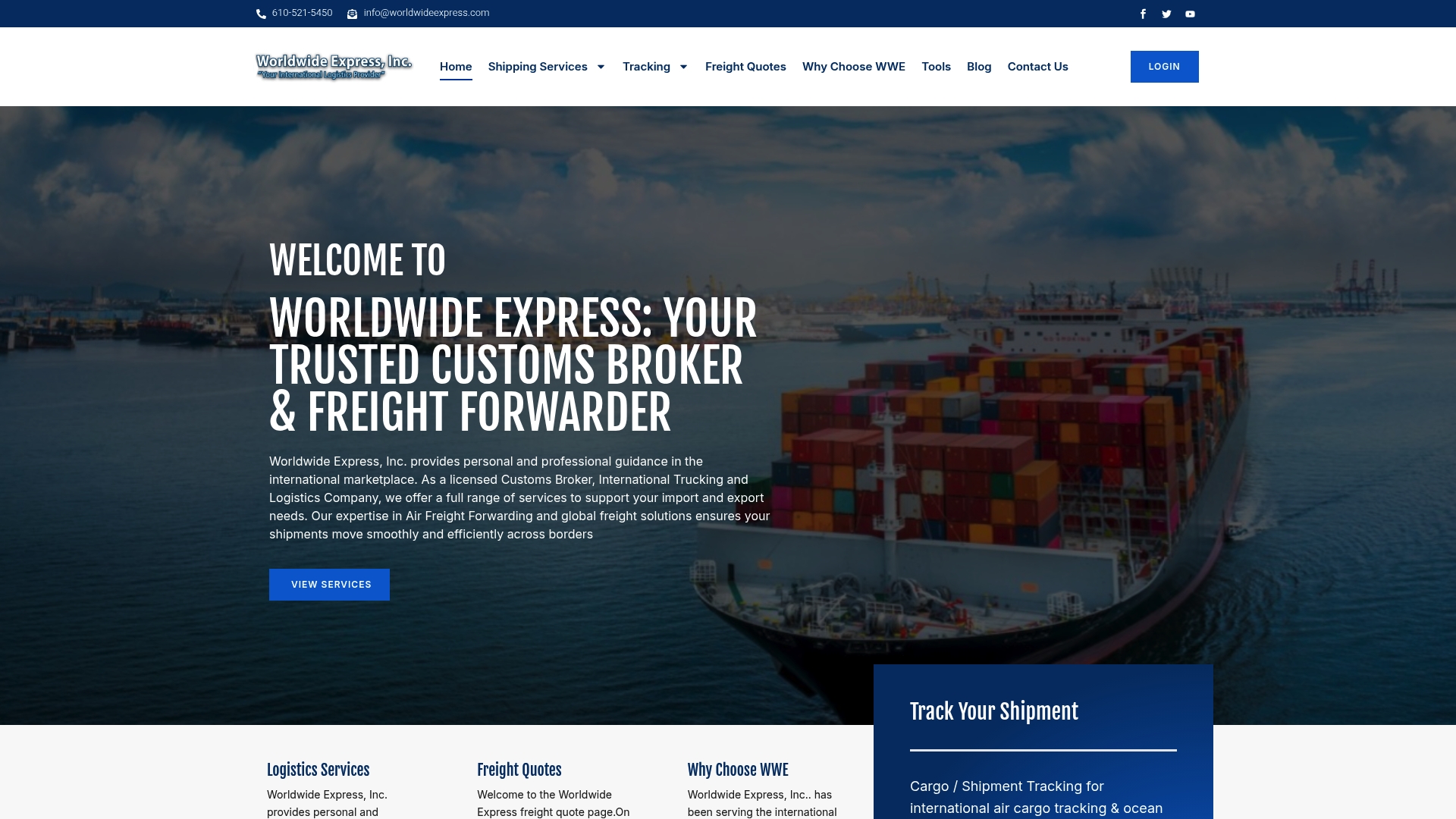
Trust your logistics and documentation challenges to a team that puts accuracy and efficiency first. At Worldwide Express, Inc., we help you master every aspect of export paperwork including bills of lading, customs clearance, and industry regulations. Get a personalized review of your shipping documents and prevent mistakes before they turn into costly shipping problems. Visit Worldwide Express, Inc. now and connect with us for reliable, stress-free international trade solutions.
Frequently Asked Questions
What is a bill of lading?
A bill of lading is a legal document issued by a carrier to acknowledge receipt of cargo for shipment. It serves as a contract between the shipper and carrier and details essential shipping information.
Why is it important to verify shipper and consignee information on the bill of lading?
Verifying the shipper and consignee information ensures that the shipment is accurately routed, preventing delays or complications during customs clearance. Any discrepancies can lead to significant logistical issues.
What details should I look for in the cargo description section of the bill of lading?
In the cargo description section, look for precise product descriptions, total number of packages, weights, dimensions, packaging types, and any special handling requirements. This information is crucial for logistics and customs compliance.
What are the payment terms in the bill of lading, and why are they important?
The payment terms outline how and when financial transactions occur, specifying who is responsible for freight charges. Understanding these terms is important to avoid unexpected costs and ensure smooth shipping operations.
Recommended
- Understanding What is Through Bill of Lading – Worldwide Express, Inc.
- Understanding Bill of Lading Types in Trade Transactions – Worldwide Express, Inc.
- What is the Bill of Entry? Understanding Its Importance – Worldwide Express, Inc.
- 8 Key Freight Terms Definitions Every Importer Should Know – Worldwide Express, Inc.



